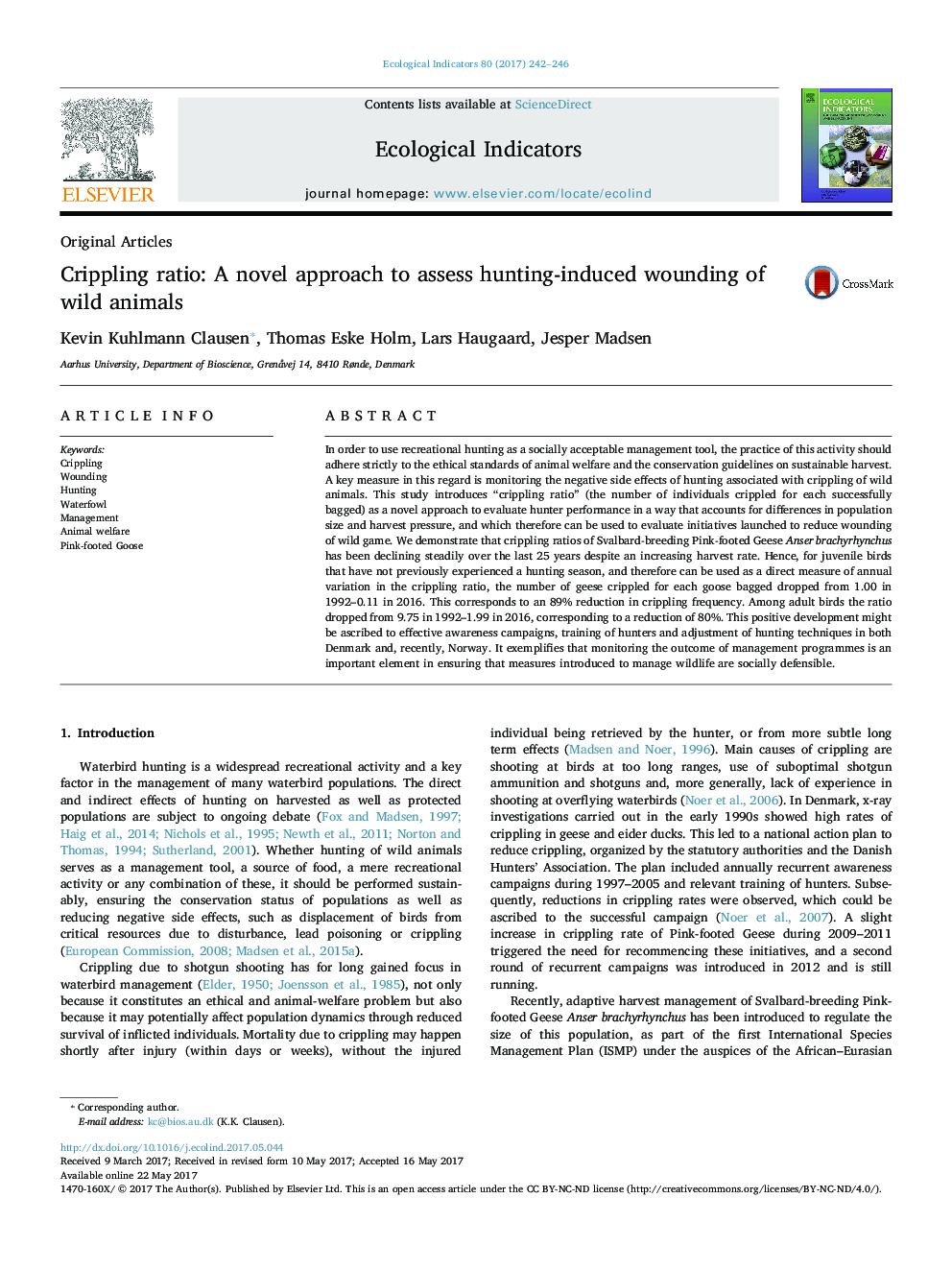| Article ID | Journal | Published Year | Pages | File Type |
|---|---|---|---|---|
| 5741386 | Ecological Indicators | 2017 | 5 Pages |
â¢Hunting as a socially acceptable management tool relies on minimizing crippling.â¢The “crippling ratio” accounting for harvest rate can measure hunter performance.â¢For pink-footed geese awareness campaigns reduced crippling ratios by 89%.â¢Population impacts due to wounding have consequently likely been reduced.
In order to use recreational hunting as a socially acceptable management tool, the practice of this activity should adhere strictly to the ethical standards of animal welfare and the conservation guidelines on sustainable harvest. A key measure in this regard is monitoring the negative side effects of hunting associated with crippling of wild animals. This study introduces “crippling ratio” (the number of individuals crippled for each successfully bagged) as a novel approach to evaluate hunter performance in a way that accounts for differences in population size and harvest pressure, and which therefore can be used to evaluate initiatives launched to reduce wounding of wild game. We demonstrate that crippling ratios of Svalbard-breeding Pink-footed Geese Anser brachyrhynchus has been declining steadily over the last 25 years despite an increasing harvest rate. Hence, for juvenile birds that have not previously experienced a hunting season, and therefore can be used as a direct measure of annual variation in the crippling ratio, the number of geese crippled for each goose bagged dropped from 1.00 in 1992-0.11 in 2016. This corresponds to an 89% reduction in crippling frequency. Among adult birds the ratio dropped from 9.75 in 1992-1.99 in 2016, corresponding to a reduction of 80%. This positive development might be ascribed to effective awareness campaigns, training of hunters and adjustment of hunting techniques in both Denmark and, recently, Norway. It exemplifies that monitoring the outcome of management programmes is an important element in ensuring that measures introduced to manage wildlife are socially defensible.
